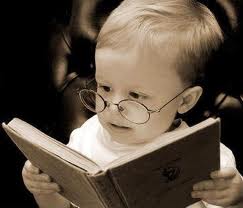This is a version of an article I wrote for LifeWay’s ParentLife magazine. It appeared in the July, 2010 issue.
At writing seminars everywhere, writing teachers are giving stuck story-writers the same advice: “Ask yourself, ‘What is it that my character wants?’”
Why? Because once you know what a character wants, you know what choices he or she is likely to make. Once your character starts making choices, consequences follow. And then a story begins to take shape.
Desire. Choice. Consequence. That’s what a story is made of.
When we speak of the other kind of character—an individual’s character or integrity—we’re usually talking about the choices that person makes. A person of character chooses the good over the bad, the better over the good, the best over the better, whatever the circumstances. And why does a person make such choices? Because he or she wants what is good or better or best.
Each of us is a welter of warring desires. You want to lose weight, but you also want that other piece of cake. You want to make good grades, but there are a million things you want to do instead of studying. You want to please God, but you also want to please yourself. So how do you choose? You choose according to what you want at the moment of choosing. And your choices have consequences, which shape the next part of your story.
Desire. Choice. Consequence. It’s what character is made of too.
It is that parallel between story development and character development that makes story such a valuable tool in shaping your child’s character. In the midst of life’s battles, it can be hard for a child—for any of us—to step back far enough to see the connection between desire, choice, and consequence. In a well-told story, on the other hand, it is easier to see the big picture, even as we inhabit it in a small way.
If you are going to use stories as a means of shaping your child’s character, it is important, of course, to find stories that teach the right things. But that is not the only important thing; it is at least as important that you get in the habit of talking to your child about the stories he or she experiences. Help your child see the connection between desire, choice, and consequence by asking questions like these about the stories you read together:
- Why do you think the character made that choice? What was he trying to get?
- Did that choice get him what he wanted?
- What else did it get him?
- What was the cost of that choice?
- Do you think the choice was worth the cost?
And here’s the thing: these are the kind of questions that can help redeem even a questionable story. You might slip up with a book choice or a movie choice; it happens. But if you’re talking with your child, helping him or her make explicit the connection between desire, choice, and consequence, even a story that isn’t altogether appropriate can be a great learning opportunity. As character-building goes, a questionable story with great follow-up questions might be more valuable than a perfectly appropriate story with no discussion.
I don’t mean to suggest, of course, that any old story will do for your child or that all stories are of equal value when it comes to character-building. Some are indeed better than others. In the examples below, I offer three foundational character truths, each with three books that portray it.
Character Truth #1: This world does not define you.
Children’s fiction is full of stories in which the main character suspects he isn’t who he appears to be. Why does that idea ring so true? Because it is true. We weren’t made for this world, and in the end it’s not the world that names us or gives us our identities. To live a life of Christian character is first to come to terms with this truth.
Consider the mouse Despereaux in Kate DiCamillo’s The Tale of Despereaux (Candlewick Press): he is rejected by his fellow mice because he cannot bring himself to cringe or scurry. He is brave, adventurous; and as he follows his heart he finds out who he really is. Another of my favorites in this vein is Andrew Peterson’s Wingfeather Saga (On the Edge of the Dark Sea of Darkness and North! Or Be Eaten, Waterbrook Press). In these fabulously engaging books, two brothers and a sister find out that they aren’t who they thought they were.
The Story of Ruby Bridges (Scholastic) is a non-fiction picture book that tells the beautiful story of a six-year-old black girl who faced incredible hatred from whites in her hometown of New Orleans when she became the first black child to attend Frantz Elementary School in 1960. Her determination not to be defined by the hatred of the whites who verbally abused her every day—and her willingness to forgive—is inspiring.
Character Truth #2: You find your life by losing it.
This paradoxical truth is at the heart of the Christian faith. As with any paradox, we come closer to understanding it in story form than in its stated form. Generations of children have been introduced to the sacrificial nature of friendship through the spider Charlotte, who devotes the last of her life’s energies to rescuing the pig Wilbur in Charlotte’s Web (HarperCollins). And The Velveteen Rabbit only becomes “real” after his beauty has been loved to shredded ugliness. Kate DiCamillo’s The Miraculous Journey of Edward Tulane (Candlewick Press), also about a toy rabbit, plumbs a similar theme.
Character Truth #3: Grace is primary.
True character is not a question of will power. Character that lasts must grow out of God’s grace—and the realization that we don’t have it in us to live a life that is up to God’s standards. That’s a hard thing to teach; grace is another of those paradoxes that can be better grasped as story rather than as precept. And yet it is hard to find children’s books that truly make grace come alive for the reader.
I have fallen in love with a picture book called Sidney and Norman: A Tale of Two Pigs, by Phil Vischer (Nelson Publishers). Sidney the Pig is a mess, even by pig standards. His neighbor Norman has it all together. Both pigs are astonished to learn that God loves them without regard to their ability (or lack of ability) to keep things together.
Eleanor Estes’s The Hundred Dresses (Sandpiper) is an achingly beautiful depiction of a poor girl’s willingness to show grace and forgiveness to classmates who torment her—and her willingness, in the end, to bless them with beauty.
And I couldn’t offer a list of character-building children’s books without mentioning Sally Lloyd-Jones’s Jesus Storybook Bible. It is a reminder that the Bible is a series of stories that add up to one big story—the story of Jesus. “The Bible isn’t a book of rules, or a book of heroes,” Lloyd-Jones writes.
It’s an adventure story about a young Hero who comes from a far country to win back his lost treasure. It’s a love story about a brave Prince who leaves his palace, his throne—everything—to rescue the one he loves. It’s like the most wonderful of fairy tales that has come true in real life!
That, in the end, is why story is so valuable to the parent who wishes to shape a child’s character. All the best stories are but faint echoes of the truest Story. And as that Story finds its way deeper into our hearts, we cannot help but be changed.









Aaron Roughton
Love this post. Thanks Jonathan.
sally apokedak
I also love this post and must add that the picture of the kid in the round glasses is pretty terrific.
Amy
Ditto….great post Jonathan. Thank you.
Sheryl Roman
What christian books would you recommend for a 14 yrs. old boy that would address the issue of desire,choice and consequence?
Jonathan Rogers
Sheryl, I think all good stories concern themselves with desire, choice, and consequence. The trick is helping young readers see how they play out in a story and in real life. Having said that, here are some books that I think would be great for a fourteen-year-old boy: Peace Like a River by Leif Enger; Huckleberry Finn and Tom Sawyer by Mark Twain; The Yearling by Marjorie Kinnan Rawlings; and (if you don’t mind my saying so) The Charlatan’s Boy, by me.
Also, what about Louis L’Amour’s books? I haven’t actually read them, but I think they might be just about right for a 14-year-old. I’m really sad that Westerns have fallen out of favor. I’m hoping that the new True Grit movie might help bring them back.
This is a great question, Sheryl. I’m thinking we might have to open this one up to the group…